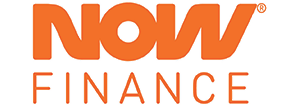
Despite what the name might suggest, peer-to-peer loans aren't exactly about getting cash from your mates. Essentially, there sits a group of investors (which can be individuals) on one side, an intermediary in the middle (the brand or platform), and you the borrower on the other side.
Peer-to-peer or P2P loans can be both an investment, and a way to borrow money. Alongside the big banks, the regional banks, credit unions and non-bank lenders, P2P platforms are offering competitive loans and alternative ways to attain finance. They way they make money is through taking a fee off the top of the investment, and potentially off the borrower.
Peer-to-Peer Personal Loan Interest Rates Australia
How does a peer-to-peer personal loan work?
Apart from the technicalities, P2P loans can work exactly the same way as other types of personal loans and can be used for similar purposes.
On the surface P2P loans may be indistinguishable from regular personal loan lenders, and rates are heavily dependent on your credit score.
Interest rates on P2P loans can be comparable to other types of unsecured lending. As they are usually unsecured, interest rates can be four percentage points (or more) higher than an equivalent secured loan. This is because nothing is used as security on the loan (such as a car) in case you default.
Unlike traditional loans, P2P loans cut out the bank or lender in the middle and provide a low cost, online platform linking money from savers to borrowers. Investors can pool funds together using the platform, and get an interest rate return dependent on the class of borrower they wish to invest.
Applicants for a peer-to-peer (P2P) loan will still need to provide identification documents and their bank account details. Borrowers who default on a P2P loan will be referred to a debt collection agency and the default will be recorded on their credit report.
Borrowers can often get loan rates based on their credit history. People with a good record of repaying credit and keeping up with bills can get a low rate. Higher risk borrowers can still get approved for a peer-to-peer loan but may be charged a higher rate of interest.
P2P Loans for Investors
Not all P2P loan platforms are open to retail investors; many are catered to institutional investors. This could include high net worth individuals, other banks or institutions, hedge funds, and other large movers and shakers.
For those that are open to individual investors, though, some fundamental investing rules apply. The higher the return, it's likely the higher the risk. Investors can often choose from a pool of borrowers, with riskier borrowers offering higher returns.
In addition, capital gains are not guaranteed, and your recourse in the event of a loss is likely very low. In addition, any deposits or investments held with a P2P platform are not guaranteed, unlike in an Australian bank account.
Peer-to-Peer Loan Platforms & Providers Australia
Many P2P platforms in Australia cater to small businesses. For the purposes of brevity we'll focus on ones that cater to individual borrowers.
1. SocietyOne
Launched in 2012, SocietyOne was Australia's first P2P lending platform. It offers personal loans ranging from $5,000 to $70,000 with terms between 2 to 5 years.
2. Plenti
Established in Australia in 2014 as RateSetter, it rebranded to Plenti in 2020. Plenti was the first P2P platform in Australia open to retail investors. It provides personal loans from $5,000 to $65,000 with terms ranging from 1 to 7 years.
3. MoneyPlace
Founded in 2014, MoneyPlace focuses on offering personal loans with competitive rates, and offers loans between $5,000 and $80,000 with terms from 3 to 7 years.
4. Harmoney
Launched in New Zealand in 2014 and expanded into Australia, Harmoney provides unsecured personal loans and was the first licensed P2P lender in New Zealand. It offers loans from $2,000 to $70,000 with terms of 3 or 5 years.
5. Wisr
Rebranded from DirectMoney in 2018, Wisr is a publicly listed Australian non-bank lender offering consumer lending services. It provides personal loans ranging from $5,000 to $62,000 with terms between 3 to 7 years.
6. OurMoneyMarket (OMM)
OMM is an Australian P2P lender offering personal loans with a focus on competitive rates and flexible terms. It provides loans from $5,000 to $75,000 with terms ranging from 1 to 7 years.
Article originally published in April 2019 by Jonathan Jackson
Image via Brooke Cagle on Unsplash


